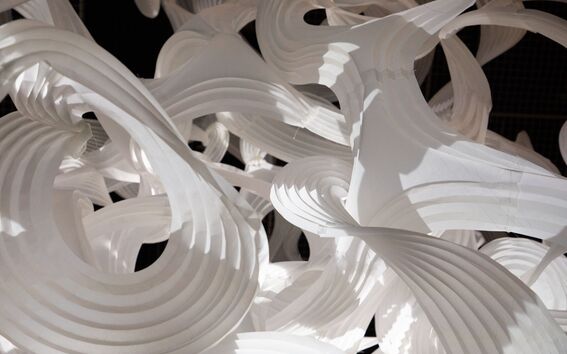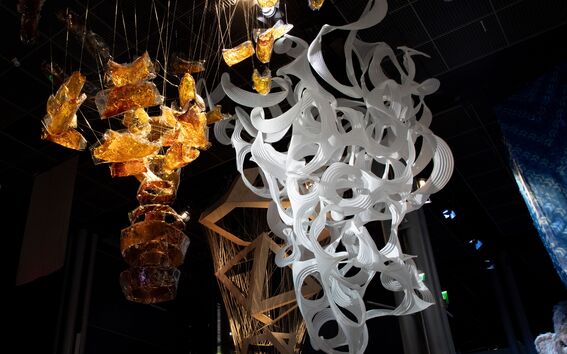Five things: Origami unfolds in many ways


1. Origami at the nanoscale
DNA origami merges biology with engineering. It’s a technique for precisely shaping DNA into specific structures.
Researchers at Aalto University have developed a method to reshape virus capsid proteins using nanoscale DNA and RNA origami structures, which means they can configure these viral particles into the desired shapes.
The diverse DNA origami structures developed at Aalto open up possibilities for vaccine development, targeted drug delivery and photothermal therapy.
2. Educational origami
Children and teens get hands-on with origami in workshops hosted by Aalto University Junior. While learning about the academic world, they might fold a Miura pattern – an extremely efficient fold that NASA has used to pack satellite solar panels.
Alongside folding instructions, workshop participants learn about origami’s role in space exploration and discover what the Aalto-1 satellite is all about. They also learn how to study space technology at Aalto.
Read more (in Finnish only)

3. Protective origami
The FOLD and FOLD2 packaging design projects boldly reimagined cardboard as a material, in collaboration with VTT.
The first phase produced a machine that folds cardboard into the classic Miura pattern. Current research is exploring ways to use this folding pattern to create packaging solutions, acoustic elements and layered sandwich structures from cardboard and other materials.
Folded cardboard offers an excellent alternative to plastic and styrofoam in packaging. Demo packages made from FOLD materials have already been showcased at international design events. In addition to its versatility and eco-friendliness, this beautiful new material has inspired designers.

4. Mathematical and artistic origami
Aalto University's Crystal Flowers in Halls of Mirrors is an interdisciplinary course where mathematics meets art and architecture.
In 2025, students explored the world of paper folding under the guidance of origami artist Juho Könkkölä. ‘Everything we studied was done by folding,’ he says. Mathematical concepts were explored while experimenting with different folds.
The exhibition Säikeistyksiä(Fibrations) showcases a cloudlike artwork that simulates turbulence as a physical phenomenon, created using numerous curved folds.

5. Textile origami
Not all folding is about creating delicate paper objects. In her doctoral research project Unfold, Mithila Mohan explored how origami can be applied to textiles, like how different materials and weaving techniques can produce fabrics that are not flat and uniform but inherently three-dimensional – almost like sculptures. Repeating origami tessellation patterns serve as templates for folding and shaping the material into self-supporting structures.
The resulting textiles ripple and move without any added support.
Mithila Mohan works in the research group Multifunctional Materials Design (MMD), which aims to create new functional materials.
Read more
Mithila Mohan - Unfold (external link)
Dialogue between origami principles, materials, and weave structures

Multifunctional Materials Design
Group led by Professor Jaana Vapaavuori

Research project develops electrically controlled artificial molecular machines
Electronically controlled molecular machines would be faster as well as easier to manufacture, as they would not need to rely on sophisticated chemical synthesis.

Nanostructures can now be '3D printed’ using DNA
Three-dimensional nano-sized structures obtained from DNA using a new design method

Text: Tiiu Pohjolainen
This article has been published in the Aalto University Magazine issue 36 (issuu.com), September 2025.
Read more news

Future makers research batteries, cryptography and plastic recycling
The Technology Industries of Finland Centennial Foundation awarded 3.5 million euros in research funding to eight projects, five from Aalto University.
The Industry Project course is at the heart of the IDBM Master's program
The multidisciplinary master's program in International Design Business Management (IDBM) celebrates its 30th anniversary this year
The pilot project for direct article delivery from the National Repository Library ends
Aalto University has been participated in the pilot project for direct article delivery with the National Repository Library and Kopiosto from 2023 to 2025. The pilot ends on 19th December.






